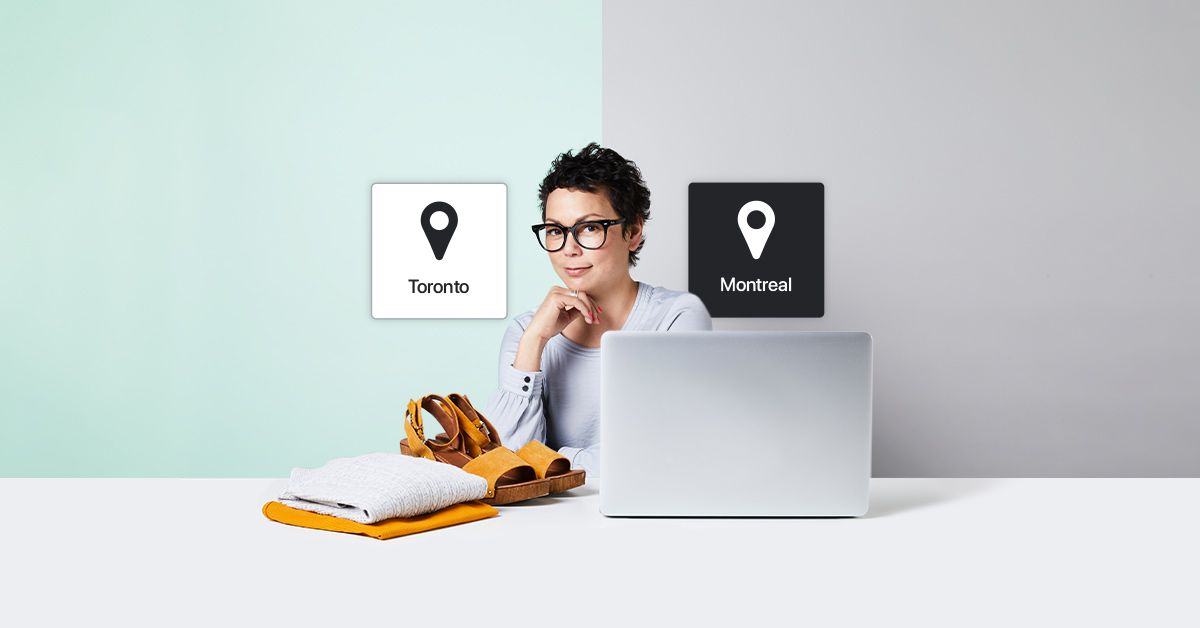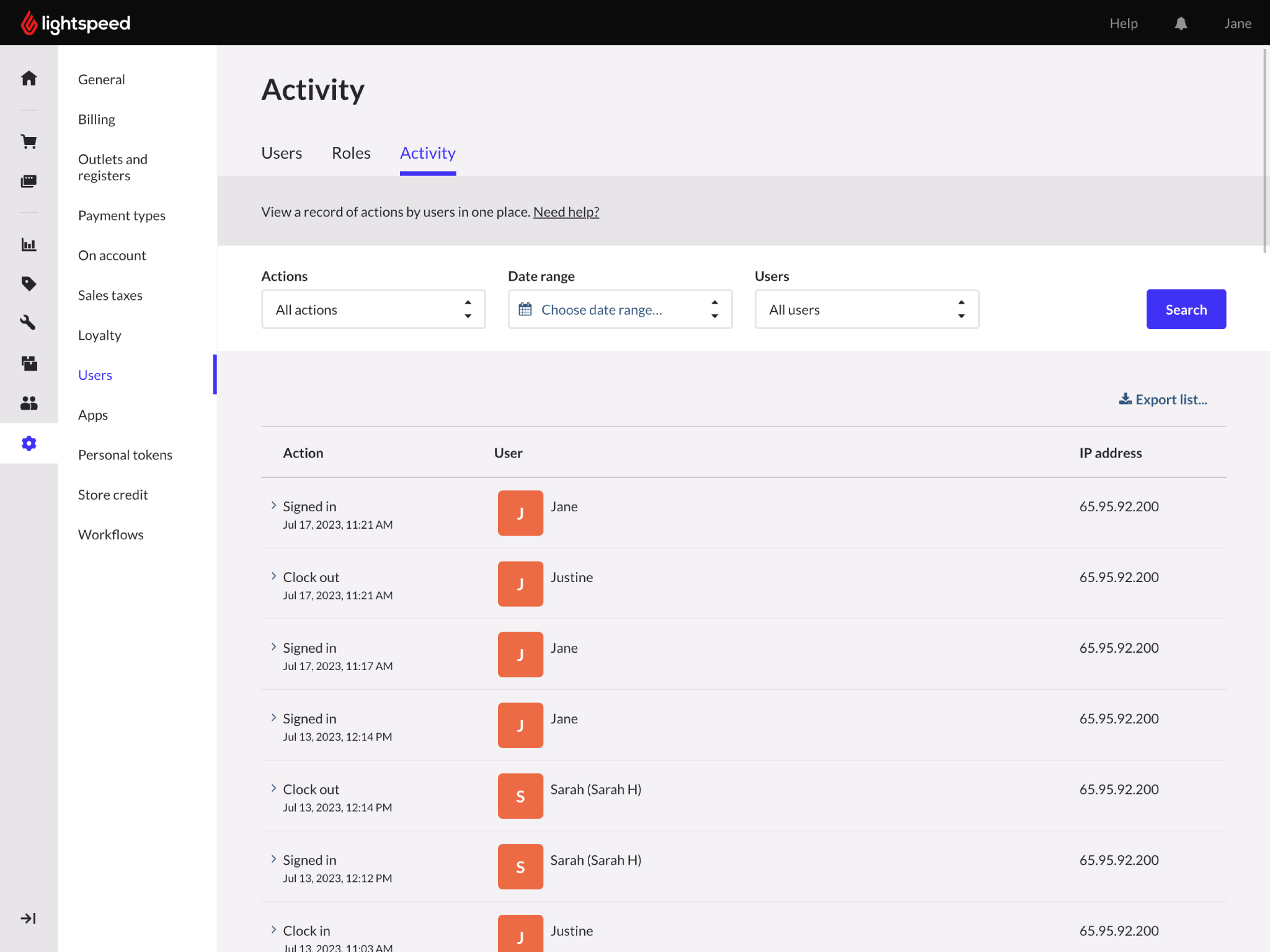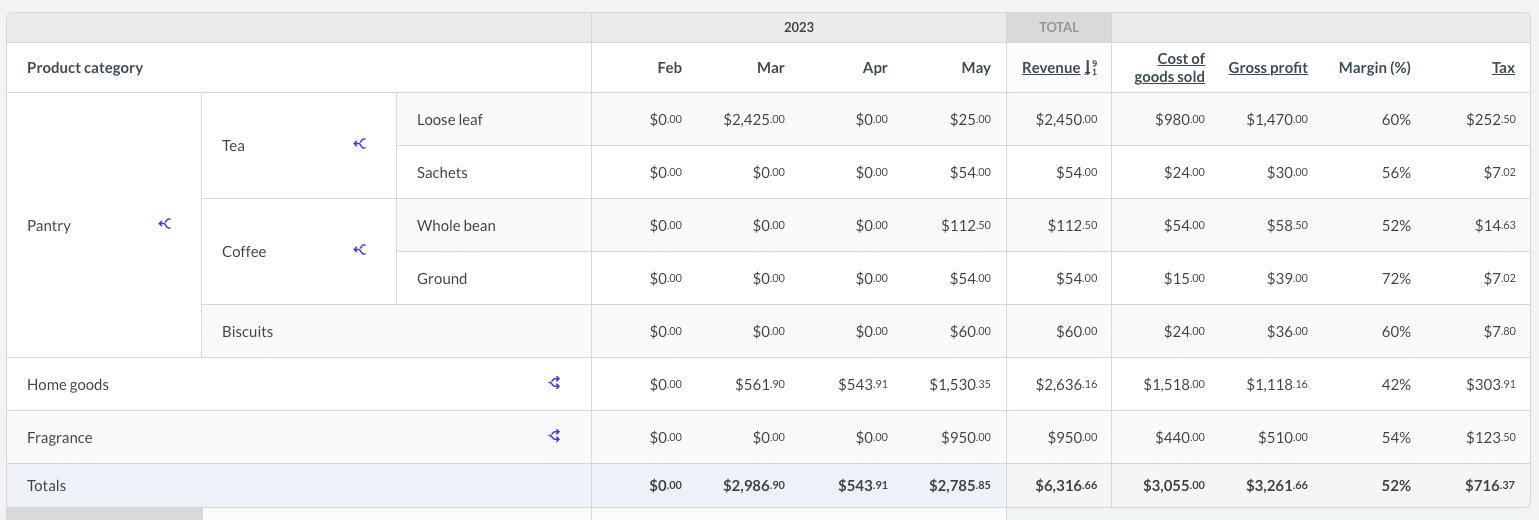
Retail store management is never simple, and when you expand into a multi location business, things can get even more complicated.
Any business that wants to grow and scale needs to have some solid processes for making sure day-to-day operations run smoothly. In this article, we’re going to explore some tips to help you manage multiple retail store locations. You’ll hear retailers and experts talk about:
- Standard operating procedures
- Hiring store employees
- Good communication
- Technology and software
- Smart store security
- Tiered user access
- Quality control audits
- KPIs per location
How to survive and thrive as a multi-location retailer
Read this guide to get the 5 strategies successful multi location businesses are using to operate efficiently and scale their businesses.
1. Standardize your operations
One way to successfully manage multiple retail store locations is to use the same standard operating procedure across all your stores, suggests Olivia Tan, Co-Founder of Singapore-based CocoFax, an online fax solution provider.
“Make sure that all of your store operations are running smoothly, even though you’re unable to be directly present to monitor each store at the same time,” said Tan.
The procedures applied at each of your stores could cover activities such as:
- Customer complaint handling
- Discounting and promotions
- Staff rosters and schedules
- The product returns system
- Customer communication
- Customer experience.
Believe us, the more locations you have, the more thankful you’ll be for having these standard operating processes in place.
2. Hire great store employees
Professional and reliable staff are another must-have.
“Hire people you can trustto represent you managing your retail stores. Make sure that all your employees are competent and able to work professionally. Periodic training is important to improve your employees’ skills, especially for those who handle customers directly every day,” said Tan.
- Give preference to employees with an ability to be professional and polite under any circumstances. Competence is a trait you should always look for too.
- Provide your employees with the right training too, as you cannot manage several stores at once. Your employees need to understand your goals and in return you need to keep them happy.
“I believe that if they’re feeling good about the company, then they’re going to stay with me a long time,” says Janet Wright, owner of FloorPlay Socks. “I’ve been in business ten years, and I have staff who’ve been with me eight years. So that’s really important to me, because then they build up a clientele as well.” - Pay attention to your employees’ welfare too. Make sure they always receive good salaries, incentives and benefits.
The bottom line is that it’s impossible to run a successful multi-store retail business without having the right people working alongside you.
3. Communicate well, communicate often
Running multiple stores demands a good approach to communication across the business too.
Tricia Gustin, Senior Marketing Director at The Parker Avery Group, said retailers would avoid common approaches like a series of emails or the ‘weekly package’ to your store manager, who is then expected to distribute information to the staff.
“We’ve seen these methods in many retailers, and they end up as a firehose and more noise than is manageable. Ultimately, in these scenarios key messaging gets lost, which leads to downstream impacts to inventory, customer service, and staffing,” said Gustin.
Instead, Gustin suggests, retailers should communicate across multiple channels with a consistent approach and cadence. “People absorb information differently, and especially with the fast pace of store operations, relying on a single channel or individual will not be as effective as it should be,” she said.
“There are tools that can help manage communications and information distribution, such as Retail Zip Line, that package communications into tasks, calendaring, resources, surveys, discussions and more. Outside of using a specific tool, the key is to have a solid plan in place that is consistently used, employs multiple channels and encourages feedback,” she said.
4. Use the right software and technology
Practical technology and software continue to be huge assets for modern day retailers. Yes, there’s a mind-boggling number of solutions and offerings out there, but here are just a few that may be helpful to managing multiple retail stores.
Ecommerce software
Many retailers struggled to find a way to create an ecommerce presence, when customers first couldn’t go to stores at the start of the pandemic. It’s never too late to set up a good online store to support a retail business with multiple locations. While there are standalone ecommerce platform providers, if you want to run a truly efficient business, look for POS systems that offer ecommerce functionality. This allows you to sync online and in-store activity across all of your locations with one platform.
Marketing software
You already know you need to build a strong relationship with customers across all of your stores. So when they’re not in one of your outlets, they’re still hearing from you. Marketing automation software can help you do this. And you can use marketing automation for much more than selling to your customers. Why should you keep in touch? Well, the next time they’re ready to buy, you want your store to be top of mind. The right software will also help you track what content and offers your customers are interested in, so you can reach them with the right message at the right time.
POS software
The more you grow, the more you’re going to need the right technology and software to stay on top of key retail metrics and activities across every single location. Modernizing your POSsetup is the smartest first step.Companies like Lightspeed can help you find the right point-of-sale setup for many different types of multiple-location retail businesses. Whether you’re working in retail franchise business, a chain department store, or a small-town retailer looking to experiment with pop-ups or outdoor markets. With counter and mobile POS terminals that sync to your accounting software, your sales assistants can accept a wide range of payment methods across every location.
As you look more deeply into POS systems to support your various locations, other things to consider include:
- Migrating to the cloud. “Not only will you save money from the need to download apps to your computer hardware, it makes a lot of processes seamless,” said Ian Sells, Co-Founder and CEO of Rebate Key. “If your retail stores are branches of the same brand, it’s best to have a cloud that contains necessary files, inventory, and processes. This allows everyone easy access to important data. This also allows easy information-sharing,” he said.
- Automating your inventory. “Having various stores means that it can be challenging to keep track of inventory manually, said Stephen Mills, the co-owner and CMO of Nolah Mattress. “It is possible, but it is too labor-intensive. The traditional way is to hire a dedicated staff to keep track of everything, but doing so is not cost-efficient and is prone to human error.” Investing in an inventory management system, like a POS system, solves all of these issues. The best part is this software helps businesses maintain sufficient stock levels across all stores. When certain items fall below the threshold, it informs the staff that they need to replenish them, ensuring that they’re always in stock.
5. Get serious about store security
Security has always been important for retail store owners.
The pandemic has led many retailers to improve their security management, as thieves looked to take advantage of shuttered locations and quieter towns and cities. A recent report showed a third of businesses want to enhance their security management.
Smart technology and security integrations can help retailers manage multiple locations while improving their stores’ performance. Consider the following for your stores:
- Smart security cameras: Video cameras are a must-have for surveillance and they can also be used for live look-ins, access control, and out-of-hours deliveries.
- Store access control: Cameras can be used alongside other smart technology like access control. Retail store owners can use cameras to identify familiar people like delivery personnel or employees to unlock doors remotely. Keycards and swipes can also increase security across your stores.
- Remote delivery tracking: Use smart cameras to track deliveries and ensure expected deliveries arrive safely and on time.
- Smart lighting and energy: With smart thermostats and lighting, owners can manage energy usage at multiple locations. For example, your store managers can set your lighting and thermostat to match open and close hours and lower the use of energy from those devices while the store is empty.
“Video surveillance now includes advanced business analytics that can help small businesses track things like queue monitoring to ensure customers are not kept waiting for service, people-counting to determine the number of customers who purchase, foot traffic to help staff appropriately for key sales peaks, and even heat maps for opportunities to improve merchandising,” said Ohad Zeira, Vice President of Small Business for security provider ADT.
6. Unite your business, but don’t confuse it
In a multi-location retail business, you need to strike a balance between transparency and visibility, and functionality. Trying to silo locations away from each other means sacrificing the big picture of what’s going on, but totally open access causes its open problems.
“We had situations where somebody in San Francisco would accidentally be messing with the inventory in Chicago,” says Wendell Ray, Global Retail Manager at Lighthouse Immersive. “And then we’re dealing with the additional headache and staffing charges of having to have two different businesses now do full scale inventory counts.”
For Lighthouse Immersive, the answer was to switch to Lightspeed and make use of tiered access permissions. That means HQ can see everything, but employees assigned to one store can’t accidentally mess with other locations.
To get visibility without opening your business up to chaos, implement centralized platforms that consolidate data from all locations while giving you the flexibility to define who can see and modify that data.
7. Conduct regular quality control audits
Regular audits and inspections serve as essential components in ensuring consistent quality control across multiple retail locations. Use a commerce platform that tracks event logs so you can keep up with every location without adding extra work to your managers’ plates.

“My favorite, favorite, favorite thing with Lightspeed is the event logs,” says Wendell for Lighthouse Immersive. “Once you get the hang of it, it is so wonderful because I can always tell if something goes wrong, where we went wrong. I can see [if] this employee’s name is coming up pretty frequently, or I can see that this is an area of opportunity for this store. So then we hop on a call with that location. I am a firm believer that numbers don’t lie.”
Conducting routine audits and inspections isn’t solely about finding faults; it’s a proactive measure to ensure ongoing improvement and consistency in operations.
“I can look at if every workflow has a time stamp on it. So I can use that to determine our company average for how long a process takes, whether it be an inventory count, whether it be our average transaction time from start to finish at the register, everything has a time stamp,” explains Wendell.
Review event logs and other data on a quarterly basis to determine a benchmark of performance for the entire company, and to pinpoint locations that might need extra guidance for quality assurance.
8. Track key performance indicators (KPIs) to assess and improve each location’s performance
Tracking performance as a whole will cover up blind spots in your business. Monitoring performance metrics by location helps reveal if any stores are doing better or worse than others, and alerts you to variations in regional markets.
“Something that we have learned is, especially in the US, every city might as well be its own country. The trends we see in different cities are shocking,” says Wendell of Lighthouse Immersive. You know, even looking at Texas, we had three different cities. We had Houston, Dallas and San Antonio opened there, and the merchandise trends and the customer trends, polar opposites in every single one of them.”
Rather than relying solely on subjective assessments, decisions regarding marketing strategies, staffing and inventory management should be based on concrete performance data. Metrics tracked per location can include sales figures, foot traffic, conversion rates, average transaction value, customer satisfaction scores, inventory turnover, sales by sub-category and more.
But you don’t want to lose hours to gathering that data—you’re better off spending that time on strategy. To make tracking data easy, use an integrated reporting system like Lightspeed Advanced Reporting.

“It’s really great to have such intuitive reporting, because it makes it so easy for us to very quickly see those trends and get ahead of them. You know, rather than spending hours and hours and hours on spreadsheets trying to figure it all out for ourselves,” add Wendell.
Staying on top of multiple retail locations
Adding one or more locations to your retail business is something you can be very proud of. It means your business is growing, opening itself up to greater foot traffic, and achieving more opportunities to bolster your sales and revenue.
Looking for software to help you streamline in-store purchases across every one of your locations? Talk to one of our retail experts to see how Lightspeed can help to ignite the potential of your multi-location retail business.

News you care about. Tips you can use.
Everything your business needs to grow, delivered straight to your inbox.



